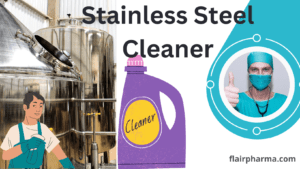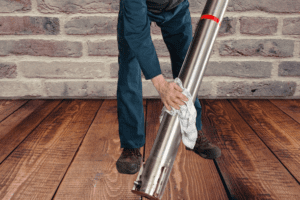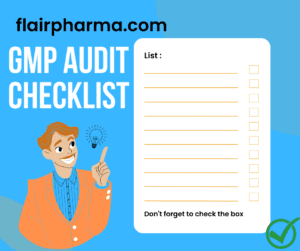Discover the ultimate stainless steel cleaner meticulously crafted for pharmaceutical settings. Our specialized formula not only ensures impeccable cleanliness but also adheres to stringent industry standards. Trust in a cleaner that safeguards stainless steel surfaces, promoting durability, compliance, and a pristine appearance. Elevate the hygiene quotient in pharmaceuticals with our dedicated stainless steel cleaner.
Stainless Steel Cleaner importance in the pharmaceutical plants
The importance of a high-quality stainless steel cleaner in pharmaceutical plants cannot be overstated, as these environments demand stringent cleanliness, compliance, and maintenance standards. Here are key reasons highlighting the significance of using a specialized stainless steel cleaner in pharmaceutical facilities:
Hygiene and Sterility:
- Critical Requirement: Pharmaceutical plants must maintain impeccable hygiene and sterility to ensure the production of safe and contamination-free drugs.
- Role of stainless steel cleaner: A specialized stainless steel cleaner is formulated to eliminate microbial contaminants, preventing the risk of cross-contamination and maintaining a sterile environment.
Compliance with Regulations:
- Regulatory Standards: The pharmaceutical industry is highly regulated, with strict compliance requirements from agencies such as the FDA.
- Role of stainless steel cleaner: Using an industry-specific stainless steel cleaner helps meet and exceed regulatory cleanliness standards, ensuring adherence to Good Manufacturing Practices (GMP).
Preservation of Equipment Integrity:
- High-Value Equipment: Pharmaceutical plants house expensive and critical equipment, much of which is made of stainless steel due to its durability and corrosion resistance.
- Role of stainless steel cleaner: A dedicated stainless steel cleaner preserves the integrity of equipment surfaces, extending their lifespan and reducing the need for frequent replacements.
Prevention of Corrosion:
- Corrosion Threat: Stainless steel, while corrosion-resistant, can still be susceptible to corrosion in certain conditions, especially in the presence of aggressive chemicals.
- Role of stainless steel cleaner: Regular cleaning with a specialized solution mitigates the risk of corrosion, protecting stainless steel components and ensuring their long-term functionality.
Aesthetic Presentation:
- Professional Image: Maintaining a clean and aesthetically pleasing environment is crucial for the professional image of a pharmaceutical plant.
- Role of stainless steel cleaner: A stainless steel cleaner enhances the appearance of equipment, creating a visually appealing and professional workspace.
Operational Efficiency:
- Smooth Operations: Clean and well-maintained equipment contributes to the smooth functioning of pharmaceutical processes.
- Role of stainless steel cleaner: By preventing the buildup of contaminants, a specialized cleaner supports operational efficiency and minimizes the risk of equipment malfunctions.
Quality Assurance:
- Product Quality: The cleanliness and integrity of pharmaceutical manufacturing equipment directly impact the quality of the final products.
- Role of stainless steel cleaner: Using a high-quality stainless steel cleaner is integral to the overall quality assurance process, ensuring that pharmaceutical products meet the highest standards.

Best cleaning method to clean the Stainless Steel SS304 & SS316L:
| Cleaning Method | Stainless Steel SS 304 | Stainless Steel SS 316L |
|---|---|---|
| 1. Mild Detergent Wash | – Use a mild detergent and warm water. | – Similar to SS 304, a mild detergent is effective. |
| 2. Vinegar Solution | – Diluted vinegar for cutting through residue. | – Effective for SS 316L, cutting through stains. |
| 3. Olive Oil Buffing | – Apply olive oil drops for a polished finish. | – Buff with olive oil for a lustrous SS 316L surface. |
| 4. Microfiber Cloth | – Use a soft microfiber cloth for final polishing. | – Ideal for both SS 304 and SS 316L for a smooth finish. |
| 5. Passivation (for SS 316L) | – Nitric acid solution for enhanced corrosion resistance. | – Essential for SS 316L, creating a corrosion-resistant layer. |
Causes of stainless steel corrosion in pharmaceutical plant:
Corrosion in stainless steel within a pharmaceutical plant, despite its inherent resistance to corrosion, can occur due to various factors. Understanding these causes is crucial for implementing preventive measures. Here are some common causes of stainless steel corrosion in pharmaceutical plants:
- Chemical Exposure:
- Cause: Exposure to aggressive chemicals, such as acids or alkalis, can compromise the protective oxide layer on stainless steel surfaces.
- Preventive Measures: Choose materials compatible with the chemicals used in the plant, and implement proper material selection based on the specific process requirements.
- Halide Contamination:
- Cause: Presence of halide ions (chlorides, bromides, fluorides) can initiate pitting corrosion in stainless steel, especially in chloride-rich environments.
- Preventive Measures: Minimize contact with halide-containing substances, use stainless steel grades with higher resistance to halide-induced corrosion, and implement regular cleaning procedures.
- Temperature Extremes:
- Cause: High temperatures can accelerate the corrosion process, leading to the breakdown of the passive film on the stainless steel surface.
- Preventive Measures: Control and monitor temperature conditions, select stainless steel alloys suitable for elevated temperatures, and implement effective cooling systems.
- Microbial Influences:
- Cause: Microbial activity in certain pharmaceutical processes can contribute to localized corrosion and biofilm formation on stainless steel surfaces.
- Preventive Measures: Maintain stringent hygiene practices, implement proper cleaning and sterilization procedures, and consider the use of antimicrobial materials or coatings.
- Abrasive Wear and Erosion:
- Cause: Abrasive particles in pharmaceutical processes can lead to mechanical wear, compromising the protective layer on stainless steel.
- Preventive Measures: Implement measures to reduce abrasive wear, such as proper equipment design, use of abrasion-resistant coatings, and regular inspection and maintenance.
- Stagnant Conditions:
- Cause: Stagnant or low-flow conditions can lead to the accumulation of corrosive substances on stainless steel surfaces.
- Preventive Measures: Design processes to ensure adequate fluid flow, use proper equipment geometry to minimize stagnation, and implement regular flushing or cleaning procedures.
- Incorrect Alloy Selection:
- Cause: Using an inappropriate stainless steel grade for specific applications can result in accelerated corrosion.
- Preventive Measures: Select stainless steel alloys based on the specific chemical environment, temperature, and other operational conditions of the pharmaceutical process.
- Welding Practices:
- Cause: Poor welding practices, such as inadequate passivation of welds, can create vulnerable areas prone to corrosion.
- Preventive Measures: Adhere to proper welding techniques, ensure thorough passivation of welded areas, and use corrosion-resistant filler materials.
Handling of stainless steel as per good manufacturing practices in the pharmaceutical plants
Handling stainless steel in pharmaceutical plants in accordance with Good Manufacturing Practices (GMP) is crucial to ensure the integrity, cleanliness, and safety of pharmaceutical processes. Here are key considerations for handling stainless steel in a GMP-compliant manner:
Material Selection:
- GMP Guideline: Choose stainless steel grades suitable for pharmaceutical applications, considering corrosion resistance, durability, and compatibility with process chemicals.
- Implementation: Follow industry standards for material selection, considering the specific requirements of the pharmaceutical processes.
Equipment Design:
- GMP Guideline: Design equipment with smooth surfaces, avoiding crevices and dead spaces where contaminants can accumulate.
- Implementation: Work with equipment manufacturers to ensure designs that facilitate easy cleaning, minimize the risk of cross-contamination, and comply with sanitary design principles.
Surface Finish:
- GMP Guideline: Use stainless steel with smooth surface finishes to reduce the potential for microbial adhesion and facilitate cleaning.
- Implementation: Implement electropolishing or passivation processes to enhance surface smoothness and remove contaminants on stainless steel surfaces.
Welding Practices:
- GMP Guideline: Employ qualified welding procedures and ensure proper passivation of welds to maintain the corrosion resistance of stainless steel.
- Implementation: Train personnel in welding procedures, conduct regular inspections, and follow documented welding protocols to maintain the integrity of stainless steel welds.
Cleaning and Sterilization:
- GMP Guideline: Establish validated cleaning and sterilization procedures to ensure equipment surfaces meet required cleanliness standards.
- Implementation: Develop and follow Standard Operating Procedures (SOPs) for cleaning and sterilization, incorporating validated methods, detergents, and agents suitable for stainless steel.
Preventing Contamination:
- GMP Guideline: Implement measures to prevent cross-contamination between different products or batches.
- Implementation: Use dedicated equipment for specific products, follow stringent cleaning procedures between batches, and implement effective changeover processes.
Regular Inspections and Maintenance:
- GMP Guideline: Conduct regular inspections of equipment to identify and address any issues promptly.
- Implementation: Establish a maintenance schedule, perform routine inspections, and address any wear, corrosion, or damage to stainless steel components.
Training and Documentation:
- GMP Guideline: Provide training to personnel involved in handling stainless steel equipment and maintain comprehensive documentation of processes and procedures.
- Implementation: Conduct regular training sessions, document equipment handling protocols, and ensure that personnel are aware of GMP requirements and best practices.
Validation and Qualification:
- GMP Guideline: Validate processes, cleaning procedures, and equipment to ensure consistent and reliable performance.
- Implementation: Perform qualification studies, including Installation Qualification (IQ), Operational Qualification (OQ), and Performance Qualification (PQ), to demonstrate the effectiveness of stainless steel handling processes.
Traceability:
- GMP Guideline: Implement systems for traceability of materials and equipment to facilitate accountability and investigation in case of issues.
- Implementation: Maintain accurate records of stainless steel material specifications, sourcing information, and equipment history.
sop-for-identification-of-stainless-steel
The routine cleaning process for stainless steel:
- Regular Maintenance (Recommended every 6 months):
- Begin the cleaning process by gently scrubbing away accumulated dirt or grime using a soft nylon brush.
- Follow up by cleansing the surface with a mild soap or detergent specifically designed for stainless steel.
- Thoroughly rinse the stainless steel with clean water to eliminate any residue left by the cleaning agents.
- After rinsing, ensure the stainless steel is completely dry using methods such as a soft cloth, disposable wipe, or an air blower to achieve a dry surface.
- Preservation and Corrosion Prevention:
- Stainless steel must be cleaned regularly to preserve the metal’s integrity and maintain a pristine appearance.
- Proper care and selecting an appropriate stainless steel grade can prevent corrosion, extending the life of the material.
- Neglecting stainless steel maintenance can result in the accumulation of corrosive substances on vulnerable surfaces.
- Caution with Chemicals:
- Stainless steel care may involve the use of harmful chemicals. Follow all safety instructions provided with cleaning or polishing agents.
- Personal protective equipment should be worn in accordance with occupational health and safety guidelines when handling these chemicals.
These bullet points encapsulate the essential steps and considerations for routine cleaning of stainless steel, emphasizing both the practical cleaning process and the importance of caution when handling potentially harmful chemicals.
Preserving the Pristine: A Guide to Protecting Stainless Steel from Rust
Stainless steel’s allure lies not only in its aesthetic brilliance but also in its inherent resistance to corrosion. However, like any hero facing the elements, stainless steel benefits from vigilant guardianship. In this guide, we unveil proven cleaning methods and passivating treatments to fortify your stainless steel against the relentless advance of rust.
Cleaning Rituals: Warding off the Rust Menace
1. Gentle Detergents and Warm Water Bath:
- Method: Begin with a gentle bath of mild detergent and warm water.
- Rationale: This initial cleanse rids the stainless steel surface of contaminants that might compromise its corrosion resistance.
2. Vinegar Vigilance:
- Method: Introduce a diluted vinegar solution for a deeper cleanse.
- Rationale: Vinegar’s acidity combats stubborn stains and corrosive agents, leaving the stainless steel revitalized.
3. Olive Oil Elixir:
- Method: Apply a few drops of olive oil, followed by gentle buffing.
- Rationale: Olive oil not only adds a lustrous finish but also forms a protective barrier against moisture, a common catalyst for rust.
The Passivation Shield: Elevating Corrosion Resistance
4. Nitric Acid Baptism (for SS 316L):
- Method: Engage in the passivation ritual with a nitric acid solution.
- Rationale: Passivation forms a protective oxide layer on SS 316L, enhancing its resistance to corrosion and rust.
A Choreography of Protection
5. Consistent Microfiber Maintenance:
- Method: Regularly polish the stainless steel using a soft microfiber cloth.
- Rationale: Microfiber not only adds a final sheen but also removes any residual contaminants, maintaining the stainless steel’s pristine state.
6. Avoid Harsh Chemical Interludes:
- Method: Steer clear of abrasive cleaners containing chlorides.
- Rationale: Chloride-based cleansers can compromise the protective layer of stainless steel, rendering it vulnerable to rust.
The Sentinel’s Summary:
To safeguard stainless steel from rust, choreograph a symphony of cleaning rituals and passivating treatments. Employ the gentleness of mild detergents, the acidity of vinegar, and the richness of olive oil for regular maintenance. For SS 316L, the grand finale involves the solemn passivation ceremony with nitric acid, creating an impermeable shield against corrosion.
By embracing these proven methods, your stainless steel shall stand resilient, repelling rust with a gleaming defiance. With this protective choreography, your stainless steel surfaces will not merely endure but will radiate an enduring brilliance, a testament to the timeless battle against corrosion.
Best chemical or solution to clean the stainless steel in the market.
here are several effective chemicals and solutions available in the market for cleaning stainless steel surfaces. The choice of the best option depends on the specific cleaning requirements, the type of contaminants, and the finish of the stainless steel. Here are some commonly used and effective solutions:
- Mild Soap or Detergent:
- Usage: Suitable for routine cleaning to remove dirt, grease, and general grime.
- Benefits: Gentle on stainless steel surfaces, widely available, and cost-effective.
- White Vinegar:
- Usage: Effective for removing water spots, stains, and mineral deposits.
- Benefits: Natural, non-toxic, and safe for stainless steel surfaces.
- Baking Soda Paste:
- Usage: Useful for removing tough stains and stubborn grime.
- Benefits: Acts as a mild abrasive without causing damage to the stainless steel.
- Citrus-Based Cleaners:
- Usage: Suitable for cutting through grease and providing a fresh scent.
- Benefits: Natural and environmentally friendly, often available as commercial stainless steel cleaners.
- Commercial Stainless Steel Cleaners:
- Usage: Specifically formulated for stainless steel surfaces.
- Benefits: Designed to clean, polish, and protect stainless steel, offering convenience and effectiveness.
- Isopropyl Alcohol (Rubbing Alcohol):
- Usage: Ideal for removing fingerprints, grease, and some types of stains.
- Benefits: Evaporates quickly, leaving the surface clean and streak-free.
- Olive Oil:
- Usage: Applied as a polishing agent for a shiny finish.
- Benefits: Adds a protective layer, enhancing the stainless steel’s resistance to fingerprints and water spots.
- Specialty Stainless Steel Cleaners with Passivation Properties:
- Usage: Formulated to clean and passivate stainless steel surfaces.
- Benefits: Provides a thorough clean while enhancing the corrosion resistance of the stainless steel.
When choosing a cleaning solution, consider the nature of the stainless steel surface, the type of contaminants, and any specific requirements such as passivation. Always follow the manufacturer’s instructions for proper usage and application. Additionally, test the cleaning solution in an inconspicuous area to ensure compatibility with the stainless steel finish.
Frequently Asked questions for the stainless steel cleaner
What is the best cleaner for stainless steel?
Answer: The best stainless steel cleaner for stainless steel depends on the specific cleaning needs, but commonly used options include mild soap or detergent, white vinegar, baking soda paste, commercial stainless steel cleaners, and citrus-based cleaners. The choice may also be influenced by the type of stainless steel surface and the contaminants to be removed.
How do you clean 304 stainless steel?
Answer: To clean 304 stainless steel, stainless steel cleaner you can follow these steps:
- Gently scrub away dirt or grime using a soft nylon brush as a stainless steel cleaner.
- Cleanse the surface with a mild soap or detergent designed for stainless steel cleaner.
- Thoroughly rinse with clean water to remove any residue.
- Ensure the stainless steel is completely dry using a soft cloth, disposable wipe, or an air blower.
How can I polish my SS at home?
Answer: To polish stainless steel at home, you can use olive oil as a natural polishing agent. Apply a small amount of olive oil to a soft cloth and buff the stainless steel surface in circular motions until it achieves a shiny finish. Ensure the surface is clean before polishing.
What is the best cleaner for stainless steel?
Answer: The best stainless steel cleaner for stainless steel depends on its specific cleaning needs, but commonly used options include mild soap or detergent, white vinegar, baking soda paste, commercial stainless steel cleaner, and citrus-based cleaners. . The selection may be influenced by the type of stainless steel surface and the type of particles to be removed.
Can 304 stainless steel be polished?
Answer: Yes, 304 stainless steel can be polished. To polish it, you can use methods such as buffing with a soft cloth and a polishing agent. Olive oil is a commonly used natural polishing agent for stainless steel.
How do you remove rust from SS steel?
Answer: To remove rust from stainless steel, you can use a mixture of baking soda and water to create a paste. Apply the paste to the rusted area, let it sit for some time, and then scrub with a soft brush or cloth. Additionally, commercial rust removers designed for stainless steel can be effective.
How do you make stainless steel shine?
To make stainless steel shine, you can use natural agents like olive oil for polishing. Apply a small amount of oil to a soft cloth and buff the stainless steel surface in circular motions until it achieves a shiny finish. Cleaning the surface before polishing is essential.
Does vinegar shine stainless steel?
Yes, white vinegar is effective for shining stainless steel. It can be used to remove water spots, stains, and mineral deposits, leaving the stainless steel surface clean and shiny. Always rinse the surface thoroughly after using vinegar, this is also a stainless steel cleaner.
Is 304 or 316 stainless better?
Answer: Both 304 and 316 stainless steel are excellent choices for different applications. While 304 stainless steel is more cost-effective and suitable for general use, 316 stainless steel offers enhanced corrosion resistance, making it ideal for applications in harsh environments, such as marine and chemical industries. The choice depends on specific requirements and environmental conditions.


